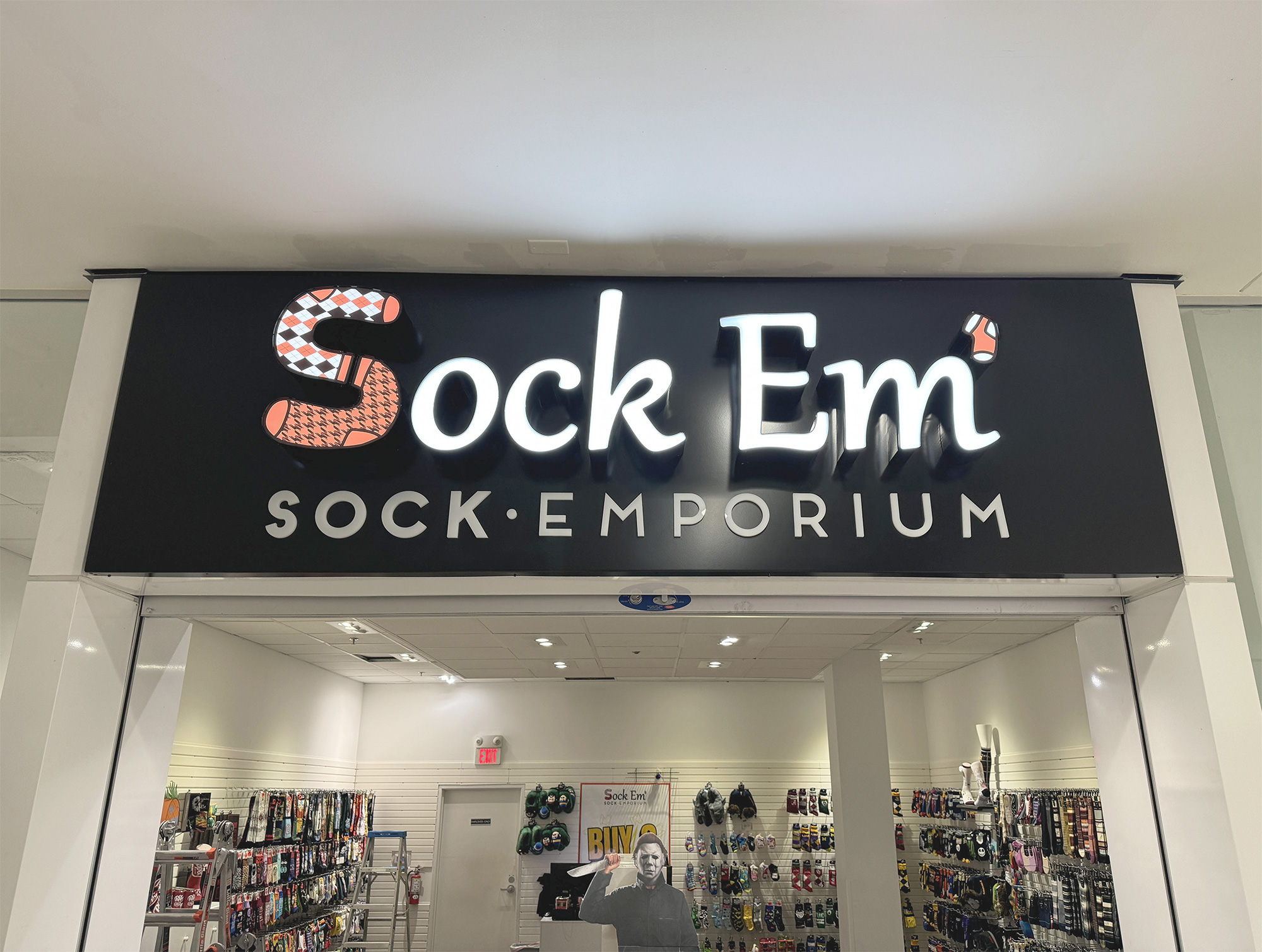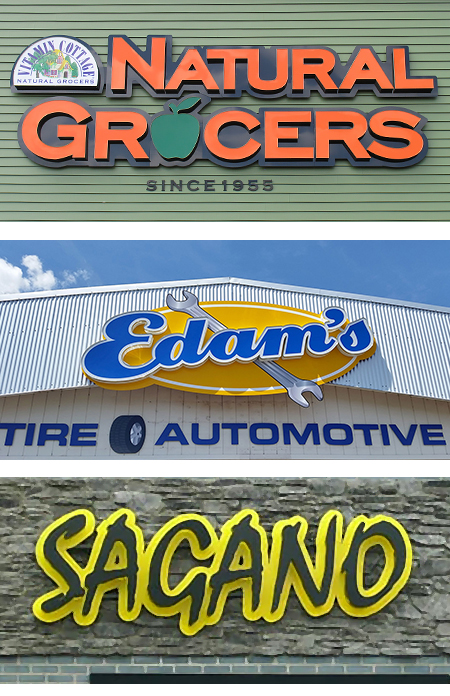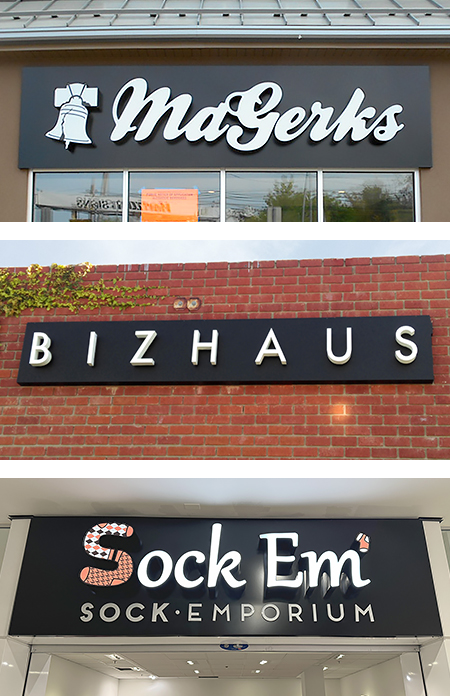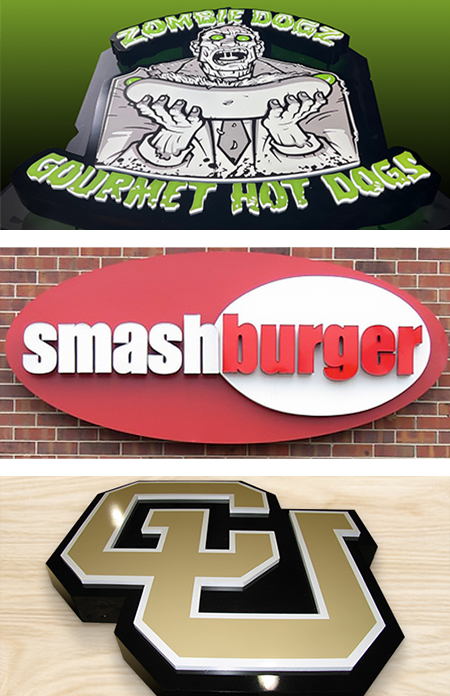April 22, 2025
Backer Panels, Wireways & Mounting Options That Make Signs Stand Out

What’s behind your sign matters just as much as what’s on the front. Raceways are reliable, familiar, and incredibly useful—we use them all the time, and they’re not going anywhere. But when your client wants something that feels elevated, something that helps their brand stand apart instead of blend in, a custom backer becomes a game-changer.
So here’s the challenge: Why stop at “standard” when you could offer something more intentional? A flat backer layered over a raceway. A dimensional backer that gives lift and contrast. A wireway that turns basic mounting into a full-blown feature. These aren’t just structural options—they’re a chance to upsell with purpose and position your shop as the one that’s ahead of the curve.
Pro Insight: Outdated Specs, Shiny Mistakes & Other Glow-Killers
From reflective finishes that disrupt your halo to outdated spec sheets that still think it’s 1997, there are a few common missteps that quietly sabotage your final product. We’ve baked in two field-tested pro tips below—quick to learn, powerful in execution.
Apply them to reduce rework, sharpen your quoting, and reinforce your reputation for quality.
Raceways vs. Dimensional Backers: Why Slimmer Wins
Need a place to run your wiring but want to avoid the bulky look of a traditional raceway? That’s where dimensional backers shine.
While a standard raceway is typically 5″ deep to house all electrical components—including power supplies—a dimensional backer offers a sleek alternative, usually ranging from 1″ to 4″ deep, depending on your needs.
Key Differences:
| Feature | Raceway | Dimensional Backer / Wireway |
| Primary Use | Electrical enclosure | Aesthetic mounting + wiring path |
| Standard Depth | 5″ | 2” |
| Visual Impact | Bulky + visible | Slim + streamlined |
| Power Supply Housing | Inside the raceway | Typically housed remotely |
| Compliance + Building Codes | May protrude beyond limits | Lower profile = easier compliance |
Dimensional backers are ideal when:
- You want a clean look without sacrificing wiring space
- Visual impact matters (especially for retail or upscale brands)
- You need to comply with city signage codes that limit projection from a building façade
Think of dimensional backers as the minimalist’s raceway—sleek, smart, and purpose-built for modern sign design.
What Sign Pros Know: The Mounting Systems That Do More
You’ve probably seen signs that look… fine. And you’ve seen signs that stop people in their tracks. The difference is often what’s behind the letters—and if you’re still defaulting to a raceway, you’re missing a huge opportunity to make your installs cleaner, smarter, and flat-out better.
At Direct Sign Wholesale, we build three mounting options that don’t just hold your letters up—they build your reputation:
- Flat Backer Panels
- Dimensional Backers
- Wireways
Each one offers more design flexibility, better lighting control, and a premium finish that gives your customers something their competitors don’t have. These aren’t just mounting systems—they’re how professional signage makes a statement.
Think of them as your secret weapons—the ones that help you win more bids, get fewer call-backs, and wow clients from the first install.
Back It Up: A Facelift for Your Mounting Game
1. Flat Backer Panels
Simple. Sleek. A designer’s secret weapon.
Flat backers are flush-mounted aluminum panels that sit directly against the wall to help your sign pop—especially when you’re working with uneven surfaces like brick, stone, or textured stucco.
Use flat backers to:
- Add contrast and readability to reverse-lit or combo-lit letters
- Create a clean, intentional shape behind your logo or channel letters
- Layer over a raceway to give it polish and professionalism
Choose from:
- Simple shapes (rectangle, oval) that match brand color for contrast
- Custom contours that follow the logo or letters for a striking, premium effect
Pro Insight: Glossy backer paint + halo-lit letters = a lighting nightmare.
That shiny finish may look good on a paint chip, but it reflects every LED module like a mirror. Your perfect glow? Gone. If you’re using a backer with reverse-lit letters, opt for satin or matte paint to keep things soft and luxe—not loud and harsh.
2. Dimensional Backers
Flush-mounted depth, no visible back.
Dimensional backers give you all the style of a flat backer—but with a lift. Made from aluminum and offered in 1″ to 4″ depths, these backers mount flush to the wall with an open back and a clean front.
Great for:
- Channel letters or logos that need depth without full enclosure
- Push-thru acrylic letters and logos (which are HOT right now)
- Custom branding that needs just the right amount of dimensional drama
Why installers love them:
- Acts like a raceway—but better looking
- Creates more space for organized wiring
- Offers a bigger visual footprint to showcase the sign
Pro Insight: The Standoff Showdown: Are You Still Installing Like It’s 1997?
We still see specs calling for 1.5″ standoffs—a carryover from the neon days when transformers and glass tubing needed that kind of clearance. But it’s 2025, and we’re not housing VHS players back there anymore.
At DSW, we recommend a 7/8″ standoff for most LED halo-lit channel letters and logos. Why?
- It’s modern and tight on a backer panel or typical flush mount direct-to-surface
- It diffuses light subtly and elegantly
- It’s easier to install—and easier on the eyes
1.5″ might be old school, but that school closed when Blockbuster did. Modern specs should match modern light sources. Don’t be afraid to suggest the update—it’s part of what makes you a pro.
3. Wireways
Full enclosure. Full control. Total finish.
Think of wireways as dimensional backers with a finished back panel—built for those moments when the back of the sign is visible or needs to look just as polished as the front.
Wireways offer the same depth range (1″ to 4″) and custom shape/paint flexibility but with one key upgrade: the rear is completely enclosed.
Best for:
- Signs installed on glass walls, canopies, or open-view frames
- Premium installs where 360° polish matters
- Centralizing electrical connections inside a clean, enclosed space
Electrical Protection Built Right In
Both dimensional backers and wireways offer a tidy, secure space for wiring—just like a raceway, but more versatile and visually refined.
Built-in benefits:
- Protection from moisture, dust, and debris
- Streamlined service access and cable routing
- Mounting hardware and wiring hidden cleanly behind the sign
Most installs only need a 2″ depth to accommodate LED wiring. Power supplies? Those are typically housed remotely—inside a wall or crawl space. But if your project requires onboard power, we’ve got the custom fabrication to make it work.
Quick-Glance Guide: Choosing the Right Mount
| Mount Type | Depth | Rear Panel? | Ideal For |
| Flat Backer Panel | 0″ | No | Adding contrast or layering over a raceway |
| Dimensional Backer | 1–4″ | Open | Adding depth, housing wiring, and hiding mounting hardware |
| Wireway Cabinet | 1–4″ | Finished | Visible backs, premium installs, and all-in-one solutions |
All options are fully customizable in depth, shape, color, and branding. If your customer dreams it, we can make it happen.
Why This All Matters
Great signs aren’t just letters on a wall—they’re layered, lit, and engineered with intention. Whether you’re mounting channel letters, logos, or push-thru acrylic, choosing the right backer or wireway can make all the difference in how your sign performs—and how your brand is perceived. When you recommend a backer, you’re not just talking about structure. You’re helping your customer:
- Improve visibility
- Add polish and precision
- Future-proof their brand
And when you offer two mounting options instead of one, you position your shop as a true partner—not just a vendor. That’s how you build loyalty, trust, and margin.
Let’s Build Something Better
At Direct Sign Wholesale, we build backer panels, dimensional backers, and wireways that ship fast and install beautifully—no matter where you are.
From big-city storefronts to small-town sign shops, our mounting solutions are designed to deliver clarity, durability, and that clean, professional finish your clients expect.
Let’s create something that stands out—and stands up. Coast to coast.
Want help choosing the right setup for your next project? Request a custom quote today!
Or call, and talk to our team about mounting options. We make signs that stand out—and stand up.
No Surprises. No Flack. Just signs done right.
